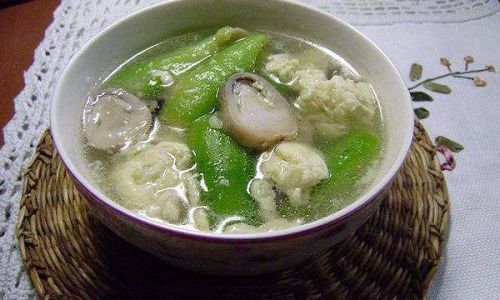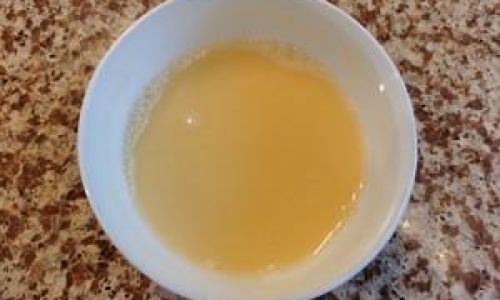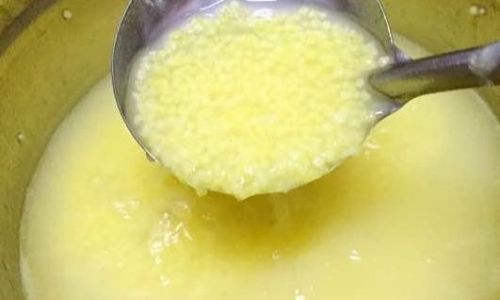Stir-fried lotus root, a beloved dish in many Asian cuisines, combines the delicate crunch of lotus root with a medley of savory, aromatic flavors. This versatile vegetable, known for its distinctive appearance and nutritional benefits, transforms into a culinary delight when prepared with precision and care. Whether you’re a seasoned home cook or a novice in the kitchen, mastering the technique of stir-frying lotus root opens the door to a dish that is both visually stunning and incredibly satisfying. In this comprehensive guide, we will explore the step-by-step process of creating restaurant-quality stir-fried lotus root, from selecting the freshest ingredients to achieving the perfect balance of textures and tastes.
Understanding Lotus Root: Nature’s Culinary Treasure
Lotus root, scientifically termed Nelumbo nucifera, is the edible rhizome of the lotus plant. Native to Asia, it has been cultivated for centuries for its culinary and medicinal properties. The vegetable is characterized by its cylindrical shape, segmented structure, and pale ivory hue. When sliced crosswise, it reveals a lace-like pattern of holes, which not only adds aesthetic appeal but also influences cooking times and texture.
Nutritionally, lotus root is a powerhouse. Rich in dietary fiber, vitamin C, potassium, and antioxidants, it supports digestion, boosts immunity, and promotes heart health. Its low-calorie content makes it an ideal ingredient for health-conscious diets, while its ability to absorb flavors ensures it adapts seamlessly to various cooking methods. Stir-frying, in particular, preserves its crispness while infusing it with bold, umami-rich seasonings.
Selecting and Preparing Lotus Root
The foundation of a great stir-fry lies in the quality of ingredients. When choosing lotus root, opt for firm, unblemished specimens with smooth, pale skin. Avoid roots that appear soft, wrinkled, or discolored, as these may indicate spoilage. Fresh lotus root should feel heavy for its size, a sign of moisture retention.
Preparation Steps:

- Peeling: Use a sharp vegetable peeler or knife to remove the tough outer skin. Work carefully to avoid wasting flesh.
- Slicing: Cut the root into thin, uniform slices (approximately 1/8 inch thick) to ensure even cooking. For added texture, some recipes call for julienned or matchstick cuts.
- Soaking: Submerge the slices in a bowl of cold water mixed with a splash of vinegar or lemon juice. This prevents oxidation (browning) and removes excess starch, which can lead to a gummy texture.
The Science of Stir-Frying: Heat and Timing
Stir-frying is a high-heat cooking technique that sears ingredients quickly, locking in flavors and nutrients. Achieving the ideal crisp-tender texture in lotus root requires mastering two critical elements: heat control and timing.
Equipment Essentials:
- A wok or large skillet with sloped sides for even heat distribution.
- A high-smoke-point oil (e.g., peanut, canola, or avocado oil) to withstand intense heat.
- Tongs or a spatula for stirring without damaging delicate slices.
Heat Zones:
- High Heat: Essential for searing aromatics (ginger, garlic) and caramelizing the lotus root’s exterior.
- Medium Heat: Used to gently cook softer ingredients (e.g., bell peppers) without burning.
Timing Tips:
- Preheat the wok until it begins to smoke lightly.
- Add oil and swirl to coat the surface.
- Stir-fry in batches to avoid overcrowding, which lowers the temperature and steams the vegetables instead of searing them.
Marinating for Flavor Depth
While lotus root’s mild flavor allows it to pair with countless seasonings, a quick marinade elevates its taste profile. A typical marinade might include:

- Soy sauce or tamari (for umami)
- Rice vinegar (for acidity)
- Sesame oil (for nuttiness)
- Cornstarch (to thicken sauces and create a glossy finish)
Method:
- Toss the sliced lotus root in the marinade for 10–15 minutes.
- Drain excess liquid before stir-frying to prevent sogginess.
Aromatics and Seasonings: Building Layers of Flavor
The magic of stir-fried lotus root lies in its harmonious blend of aromatics and seasonings. Common additions include:
- Ginger and garlic: Minced or julienned, these form the flavor base.
- Chili peppers: Fresh or dried, for a hint of heat.
- Scallions: Added at the end for a burst of freshness.
- Soy sauce, oyster sauce, or hoisin sauce: For depth and richness.
Pro Tip: For a vegan or gluten-free version, substitute soy sauce with tamari or coconut aminos.
Step-by-Step Cooking Process
Preheat the Wok:
Set the wok over high heat until it smokes lightly. Add 2 tablespoons of oil and swirl to coat.
Sear Aromatics:
Add minced ginger and garlic. Stir-fry for 10–15 seconds until fragrant but not browned.

Cook the Lotus Root:
Drain the marinated lotus root and add it to the wok. Spread the slices in a single layer and let them sear undisturbed for 1–2 minutes to develop a golden crust. Toss gently and stir-fry for an additional 3–4 minutes until tender-crisp.
Add Vegetables (Optional):
Toss in sliced bell peppers, carrots, or mushrooms. Stir-fry for 2–3 minutes until slightly softened.
Incorporate Sauces:
Pour in a mixture of soy sauce, rice vinegar, and a pinch of sugar. Stir vigorously to coat the ingredients.
Thicken and Finish:
If desired, drizzle a cornstarch slurry (1 tsp cornstarch + 2 tbsp water) into the wok. Stir until the sauce thickens. Garnish with sesame seeds and chopped cilantro.
Variations and Creative Twists
Stir-fried lotus root lends itself to endless customization. Experiment with:

- Spicy Sichuan Style: Add doubanjiang (fermented chili paste) and Sichuan peppercorns.
- Sweet and Sour: Combine with pineapple chunks and a honey-vinegar glaze.
- Mushroom Medley: Pair with shiitake or oyster mushrooms for earthy depth.
- Herb-Infused: Toss in fresh basil or Thai basil just before serving.
Serving Suggestions
Stir-fried lotus root shines as:
- A side dish alongside steamed rice or quinoa.
- A filling for lettuce wraps or spring rolls.
- A topping for noodle bowls or fried rice.
- A vegetarian addition to banh mi sandwiches.
Storage and Reheating Tips
Leftover stir-fried lotus root can be stored in an airtight container in the refrigerator for up to 3 days. To reheat, use a skillet over medium heat to maintain crispness, avoiding microwaving, which can soften the texture.
Troubleshooting Common Issues
- Soggy Texture: Overcrowding the wok or insufficient heat. Cook in batches and ensure the wok is preheated properly.
- Uneven Cooking: Inconsistent slice thickness. Use a mandoline or sharp knife for uniform pieces.
- Bland Flavor: Under-seasoning. Taste and adjust sauces before serving.
The Cultural Significance of Lotus Root
In many Asian cultures, lotus root symbolizes purity, prosperity, and resilience—qualities reflected in its ability to thrive in muddy waters yet remain untainted. During festivals like Chinese New Year, it is often included in feasts as a dish representing harmony and good fortune.
Conclusion: Elevating Everyday Cooking
Stir-fried lotus root is more than a meal—it’s a testament to the art of balancing texture, flavor, and tradition. By mastering the techniques outlined here, you’ll not only create a dish that delights the palate but also pay homage to centuries of culinary heritage. Whether enjoyed as a simple weeknight dinner or a centerpiece at a festive gathering, this recipe invites you to savor the crisp, aromatic perfection of lotus root in every bite.
So, grab your wok, sharpen your knife, and embark on a journey to transform this humble root into a culinary masterpiece. Your taste buds—and your dinner guests—will thank you.






0 comments